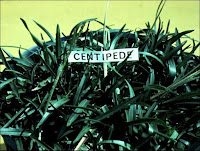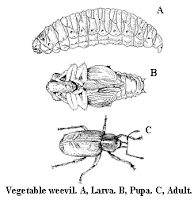
Question: Can you tell me about the harmful properties of mistletoe and whether or not it is poisonous to people?
Answer: Mistletoe is an interesting group of plants with an interesting history. On a worldwide basis mistletoe may generically refer to any of more than 200 species of semi-parasitic shrubs found worldwide. However, according to Curtis J. Hansen, Curator Freeman Herbarium, Auburn University there is primarily only one species of mistletoe that dominates the eastern United States and that is the “Oak Mistletoe”, or scientifically speaking, Phoradendron leucarpum. It sounds very romantic in Greek but literally means "tree thief". Maybe that’s where the idea of “stealing” a kiss under the mistletoe originated.
All mistletoes are parasitic, meaning they grow into a host tree and "steal" nutrients for growth. However, they are also green, so they can produce some of their own nutrients through photosynthesis. While most mistletoes don't outright kill their tree-host, they can weaken them over time and ultimately be the cause of tree death. As the name indicates, Oak Mistletoe is found mostly in oak trees, but may also be found in other hardwoods. This particular species isn't known to grow in pines or conifers in our area. Mistletoes are particularly easy to spot at this time of year when the leaves of the hardwood trees have fallen. In fact, you may find many plants in full fruit with little white berries, for female plants and male plants that are in full flower. There are separate female and male plants within this species.
The parasitic properties of mistletoe are often duplicated by the men I see hovering around the sprigs at Christmas parties. Rather than true roots, the plant has extensions called holdfasts that grip the host plant. With the holdfast the plants take what they want from the host plant (again not unlike the aforementioned men).
In the South, tiny yellow flowers bloom on the evergreen mistletoe from fall into winter. The familiar white berries begin to form soon after pollination and resemble little packets of glue around tiny indigestible seeds. Although eating mistletoe berries may potentially be lethal for humans, birds seem to be immune to any toxicity.
The immunity of birds to mistletoe's poisonous qualities is essential to the welfare of the plant. The dispersal and propagation of mistletoe is largely dependent on birds that eat berries but do not digest the seeds. Studies suggest that seeds are most likely to survive and grow if a bird deposits them on the same species of tree on which the parent plant lived.
The use of mistletoe as a romantic lure stems from England at least as early as the 1500s. A version of the tradition persists today in secular Christmas decorations. Mistletoe has an interesting story behind its name. Several hundred years ago, it was thought that the mistletoe plant was formed spontaneously from bird droppings. Of course no one thought to look inside the bird droppings for a concealed seed. However, due to this error, the plant was given the name mistletoe which translates literally in English to “dung-on-a-twig.” I think we should stick with the name mistletoe because “meet me under the dung-on-a-twig” just doesn’t set the right festive mood.
Answer: Mistletoe is an interesting group of plants with an interesting history. On a worldwide basis mistletoe may generically refer to any of more than 200 species of semi-parasitic shrubs found worldwide. However, according to Curtis J. Hansen, Curator Freeman Herbarium, Auburn University there is primarily only one species of mistletoe that dominates the eastern United States and that is the “Oak Mistletoe”, or scientifically speaking, Phoradendron leucarpum. It sounds very romantic in Greek but literally means "tree thief". Maybe that’s where the idea of “stealing” a kiss under the mistletoe originated.
All mistletoes are parasitic, meaning they grow into a host tree and "steal" nutrients for growth. However, they are also green, so they can produce some of their own nutrients through photosynthesis. While most mistletoes don't outright kill their tree-host, they can weaken them over time and ultimately be the cause of tree death. As the name indicates, Oak Mistletoe is found mostly in oak trees, but may also be found in other hardwoods. This particular species isn't known to grow in pines or conifers in our area. Mistletoes are particularly easy to spot at this time of year when the leaves of the hardwood trees have fallen. In fact, you may find many plants in full fruit with little white berries, for female plants and male plants that are in full flower. There are separate female and male plants within this species.
The parasitic properties of mistletoe are often duplicated by the men I see hovering around the sprigs at Christmas parties. Rather than true roots, the plant has extensions called holdfasts that grip the host plant. With the holdfast the plants take what they want from the host plant (again not unlike the aforementioned men).
In the South, tiny yellow flowers bloom on the evergreen mistletoe from fall into winter. The familiar white berries begin to form soon after pollination and resemble little packets of glue around tiny indigestible seeds. Although eating mistletoe berries may potentially be lethal for humans, birds seem to be immune to any toxicity.
The immunity of birds to mistletoe's poisonous qualities is essential to the welfare of the plant. The dispersal and propagation of mistletoe is largely dependent on birds that eat berries but do not digest the seeds. Studies suggest that seeds are most likely to survive and grow if a bird deposits them on the same species of tree on which the parent plant lived.
The use of mistletoe as a romantic lure stems from England at least as early as the 1500s. A version of the tradition persists today in secular Christmas decorations. Mistletoe has an interesting story behind its name. Several hundred years ago, it was thought that the mistletoe plant was formed spontaneously from bird droppings. Of course no one thought to look inside the bird droppings for a concealed seed. However, due to this error, the plant was given the name mistletoe which translates literally in English to “dung-on-a-twig.” I think we should stick with the name mistletoe because “meet me under the dung-on-a-twig” just doesn’t set the right festive mood.



Osman.frag.Close02.jpg)























